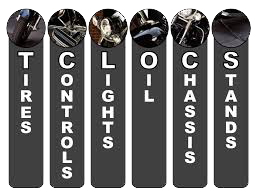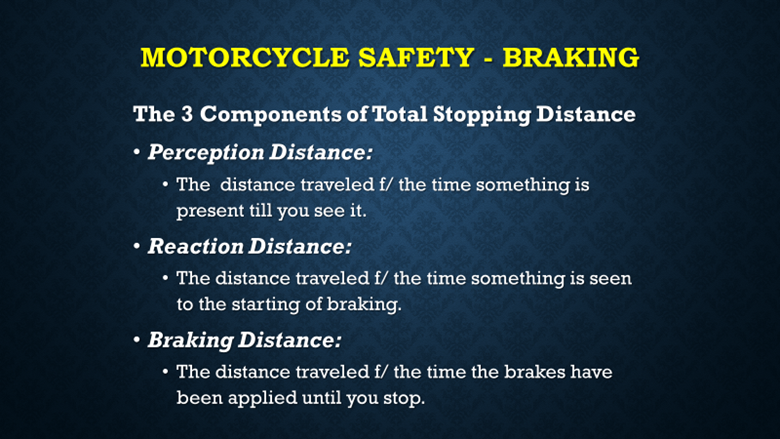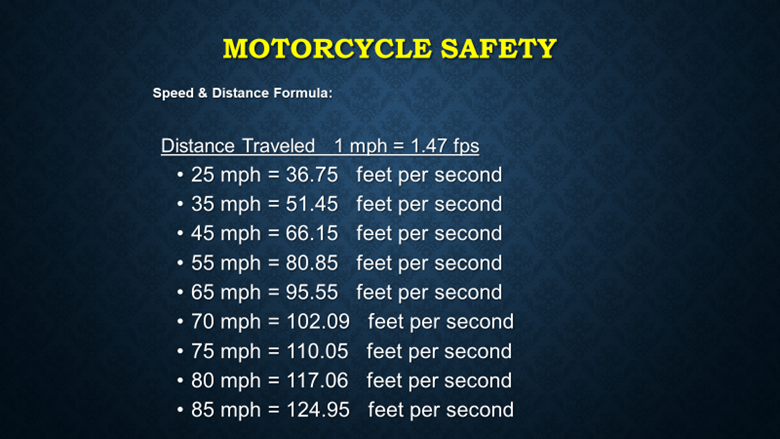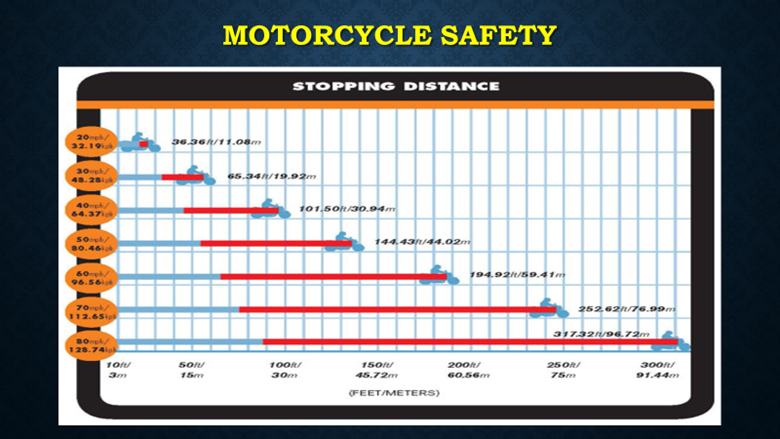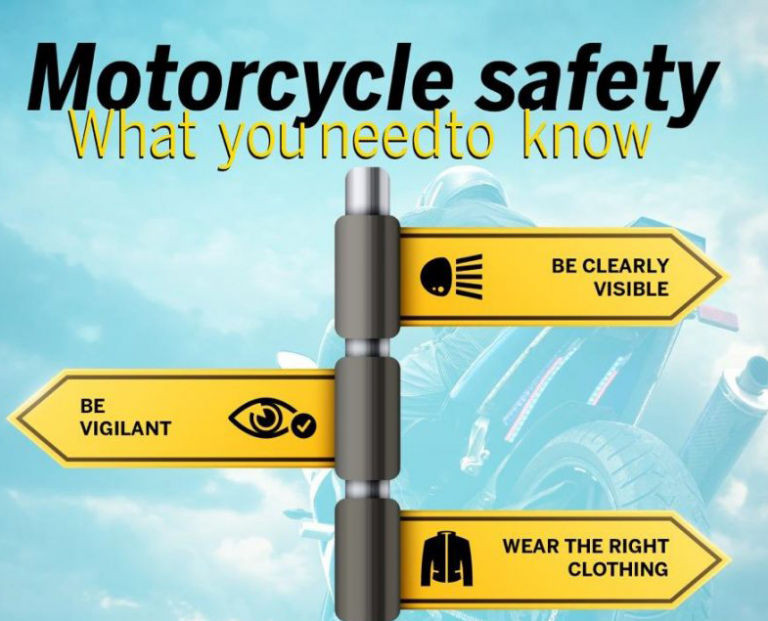
Driving a car and riding a motorcycle require different skills and knowledge. Safe motorcycling takes balance, coordination, and good judgment. Make sure you are road ready and know how to handle your motorcycle in a variety of conditions.
Continue to read on and find these answers and more on our Motorcycle Safety page.
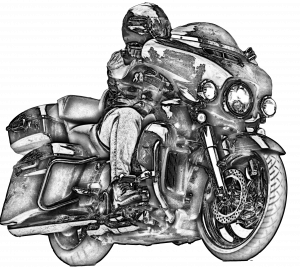
Protect Yourself! Dress For The Slide!
All The Gear, All The Time.
Helmet
The most import piece of protective gear you can wear is a helmet manufactured to meet Department of Transportation (DOT), Snell and Economic Commission for Europe (ECE) standards. Both shell and liner spread the forces of impact throughout the helmet. That’s why in most cases, if a helmet has been damaged in a crash, it will not be protective in another mishap and should be replaced.
Footwear
Sturdy, over-the-ankle boots can protect you from a variety of riding hazards. They protect against burns from hot exhaust pipes and impacts from flying road debris. Boots with oil-resistant, rubber-based composite soles will give you a strong grip on the pavement and help you keep your feet on the pegs. If the boots have the heels, they should be low and wide. In case of a crash, boots help provide valuable protection against foot and ankle injuries.
Face Protection
Any motorcyclist who has been hit in the face by a stone or an insect can tell you about the benefits of face protection. Windshields, and most prescription eyeglasses simply do not provide adequate protection. Wind, insects, and pebbles may be blown behind a windshield. Eyeglasses with shatterproof lenses may protect the eyes, but most don’t seal out wind which make your eyes water.
Gloves
Full-fingered motorcycle gloves protect hands, from blisters, wind, sun and cold and will help prevent cuts, bruises, and abrasions in a crash. Gloves that fit properly will improve your grip on the handlebars. If your gloves are too loose or bulky, you may have problems operating the controls of your motorcycle. If they are too tight, circulation will be restricted, and your hands will become cold. Motorcycle gloves are available in many styles, weights and thickness
Are You Ready For These Conditions:
HEAT
COLD
WIND
RAIN
Windproof
Add a windshield to your motorcycle to block the wind.
Wind-proof your body. Make sure the outside layer of your outfit is made of a material that will stop the wind.
Wrist bands prevents wind from entering sleeves
Wear a full face motorcycle helmet with some type of covering for your neck and head
Are You...

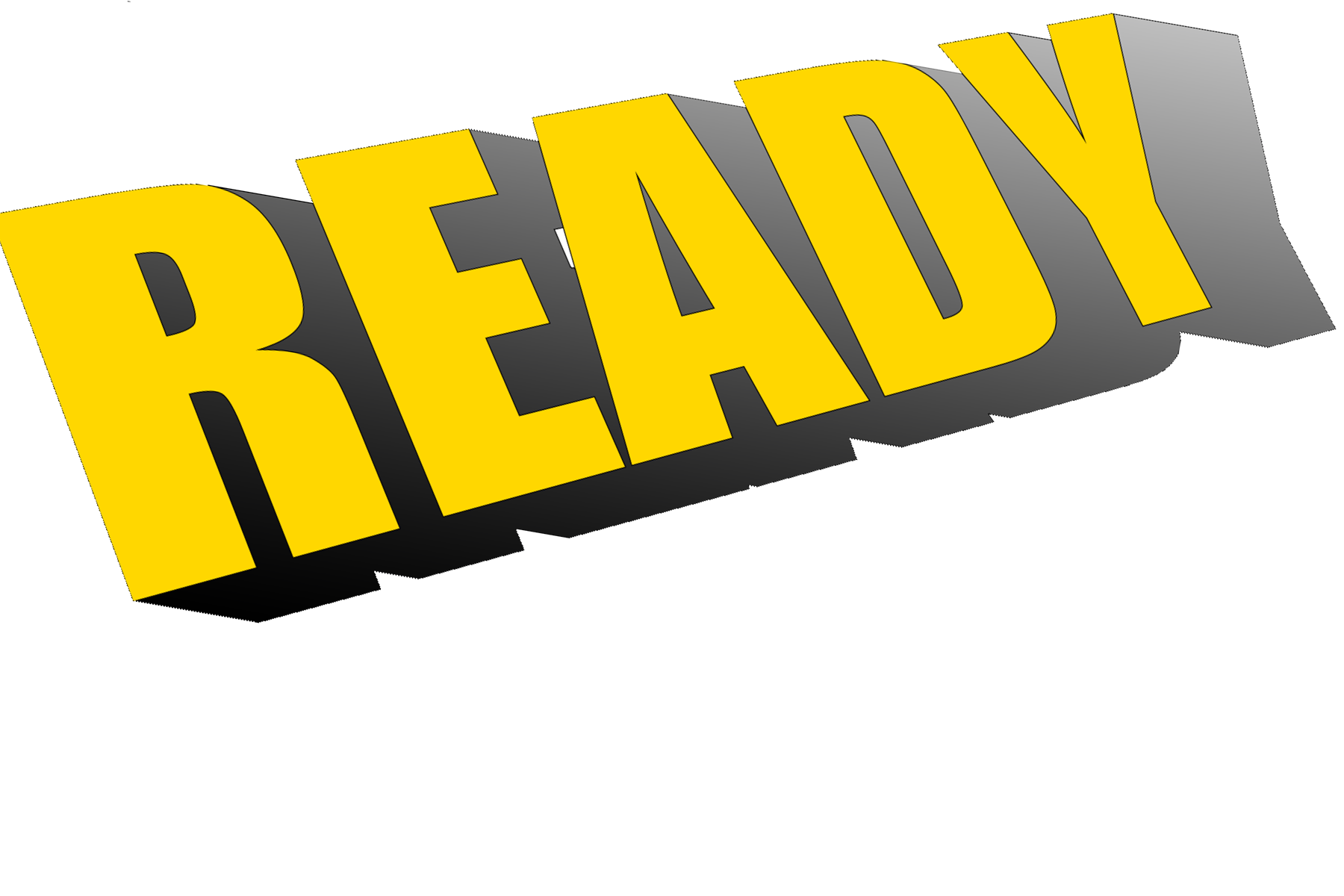
Riding a Motorcycle require visual, cognitive and motor skills, these skills are transformed into three easily understood terms:
Search – Evaluate – Execute………S.E.E.
(expand each one below to learn more)
Search:
SEARCH
Search:
Aggressively Scan for Potential Factors & Hazards
Far – Near – Side to Side
Evaluate:
EVAULATE
Evaluate:
- Potential Factors & Hazards
- Thinking about “What If”
Execute
EXECUTE
Execute:
- Act on your decision
- Adjust your Speed and/or Position
- Communicate Your Intentions
- Immediate Danger Concept (Intersections)
Group Riding:
STAGGERED - MERGING - PASSING - LANE CHANGE
Use These Three Lead Times
2 – Second “Following Distance"
Considered Minimum Distance
Provide space and time to react
4- Second “Immediate”
Path of travel
Anything w/in 4-second will require a quick response
12- Second “Anticipated Path”
Search and Scan Technique as far as you can see
Motorcycle Braking:
Tips For Accident Scene Management:
CHECK BACK COMING SOON!
Rider Fitness:
Physical, Psychological and Mental Fitness
PHYSICAL FITNESS - STRECTCHING:
Benefits of Stretching
Stretching has multiple benefits for both your body and your mind. Incorporating stretching into your daily routine allows muscles to be well circulated and ultimately healthier.
Benefits of Stretching for the Body
Flexibility
- Stretching improves flexibility. The more you stretch, the more you move your muscles, and the more flexible you become. Over time, stretching will become easier for your body which results in improved flexibility.
- Stretching is also beneficial to improve your posture. Poor posture—a common and increasing problem—can easily be reversed and healed with daily stretching. Because stretching strengthens your muscles and encourages proper alignment, your body posture will be less slouched and more vertical.
- The more you prepare your muscles for any exercising movement, the more your likelihood of injury is decreased. When your muscles are warm and stretched, movement becomes easier and more fluid-like which helps with injury prevention
Benefits of Stretching for the Mind
Calmed Mind
Stretching provides your mind with a mental break. It allows you to recharge and refresh the blood flow throughout your body, resulting in a calmer and more peaceful mindset.
Release Tension
Many individuals carry stress in their muscles. When feeling overwhelmed, muscles tighten acting as a defensive strategy. The more you stretch, the less tense muscles will be. Stretching is a very effective form of stress management.
Increase Energy
Because stretching allows for an increased blood and nutrient flow throughout the body, not only will you feel refreshed, but also your energy levels will be increased resulting in an improved sense of invigoration.
Stretching Tips
Stretching is not a warm up activity
There is much disbelief out there stating that stretching should be done before a work out is started. However, this is not necessarily true. Stretching with cold muscles may result in injury. Stretching is most effective when muscles are warm. It is best to stretch after a small bout of physical activity. If you would like to stretch before a vigorous workout, try taking a short walk or jog to warm up your muscles first, next you may start stretching, and then you may begin your workout.
Focus on muscles that are tight
Tight muscles are a result of soreness and stress. When muscles become tight, it is important to pay attention to these muscles first so that blood flow increases and tension is reduced. Once these previously tense muscles are stretched, movement becomes more fluid-like and soreness is reduced.
Reduce Bouncing
Bouncing while stretching may slightly tear muscles which may lead to scar tissue which further tighten the muscle leading to a decreased flexibility and increased soreness. Stretches should be held for about 15-60 seconds and repeated three or four times. The amount of time spent holding stretches depends on how sore you are and which muscles you want to focus on specifically.
Stretch at least 2-3 days per week for at least 10 minutes a day
Stretching does not need to be time consuming. If you take 10 minutes out of your day to stretch and try to do so at least 2-3 days a week you will achieve the most benefits. If you stretch on an irregular schedule, your body will not be able to maintain a consistent range of motion. Because stretching increases your range of motion, it is important to get in the habit of stretching often in order to increase flexibility.

